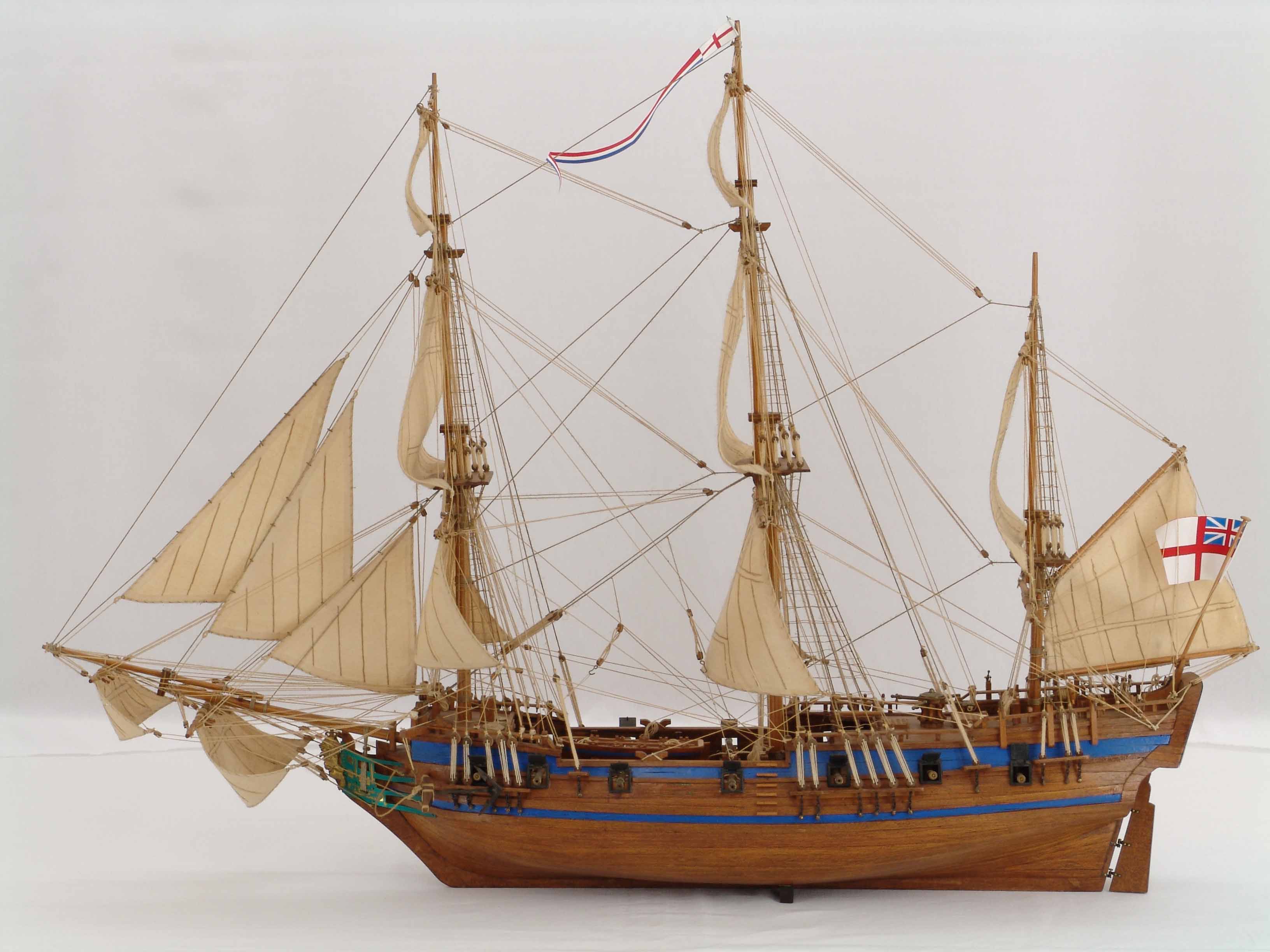The “Royal Transport” was designed by Peregrine Osborne, Marquis of Carmarthen (1659-1729). She was built by Robert Lee, to act as a fast and safe method of conveying King William III (1650-1702), other persons of high rank, messengers and goods, to Holland and back. A “Royal Transport” as the name implies.
The “Royal Transport” was launched on the 11th of December 1695 at Chatham Dockyards, east of London. She was considered a 220-ton, Sixth Rate ship, carrying 18 guns. Her length was 27,4 m, width 7,2 m and her draft was 2,4 m.
There are reasons to believe that the “Royal Transport” looked very much like the “Peregrine Galley” (see picture below) that was designed by the very same Peregrine Osborne a few years later. The “Peregrine Galley” was launched on the 21th of September 1700.

The “Peregrine Galley” had a length of 26,5 m, a width of 7 m and a depth of 3,2 m. She was later renamned “Caroline”.
When Peter the Great, (1672-1725), became Tsar, Russia had no navy of its´ own. Peter was determined to establish a fleet, so in 1697-98 he travelled to Holland to study new technology, especially shipbuilding. Soon after Peters focus shifted towards the shipbuilding in England. King William welcomed the opportunity to increase trade with Russia again, so he gave Peter all the assistance he could. Shortly after at a meeting between Peter and William, in Utrecht outside of Amsterdam in september 1697, William gave Peter a gift, a ship by the name “Royal Transport”.
The “Royal Transport” was one of Kings William´s most modern ship, with an experimental design and rig. The ship was altered and refitted for Peter and given extra golden carved decorations.
In May 1698, the “Royal Transport” sailed via Holland to the northern port of Archangel in Russia. Captain on the trip was an Englishman by the name of William Ripley, who was sadly found murdered in Moscow in June the following year.
The 29th of August 1715, five Russian ships left Archangel with destination S:t Petersburg in the Baltic. They were the Royal Transport, Captain Thomas Hutchinson, Uriel, Captain Ivan Sinyavin, Salafail, Captain Vitus Bering, Varahail, Captain Bents and the Yagudiil, Captain John Deane.
The ships got separated due to severe weather during the voyage. The “Uriel” and “Salafail” reached Copenhagen i December, the “Varahail” wintered at Flekkö in Norway, and the “Yagudiil”, after putting back for repairs, wintered near Trondhjem in Norway.
The “Royal Transport” had in late September reached Kattegat, but encountered severe weather and current, forcing her on the 25th of September, to seek shelter in the Swedish archipelago near Gothenburg. She was spotted by the Swedish navy, but the weather was to severe for them to be able to appraoch her. The “Royal Transport” was firing her canons for help, the english flag was flying in the wind. The next day, the 26th of September, her anchors broke loose and she foundered on a reef and sank. Her crew consisted of 50 men, only 24 survived.